8 Types of eCommerce Websites & Business Models
With the rise of online shopping, eCommerce has become an integral part of our daily lives. But did you ever stop to think about the different types of eCommerce businesses out there? From vendor-specific websites to B2B models, the world of eCommerce is diverse and ever-expanding.
Whether you’re an aspiring entrepreneur or a seasoned business owner, understanding the various types of eCommerce websites and business models is crucial to finding success in the online marketplace.
So, let’s dive in and explore the fascinating world of eCommerce websites and business models!
Key Takeaways:
- There are 8 types of eCommerce websites and business models.
- Each type of eCommerce website has its own advantages and challenges.
- Understanding your target market and product/service is essential in selecting the right eCommerce business model.
- E-commerce businesses can innovate using value delivery methods like white labeling, dropshipping, and subscriptions.
- The future of eCommerce looks promising with advancements in technology and changing consumer behaviors.
What Is An E-Commerce Website?
An e-commerce website allows you to sell products and services online instead of through a physical store. It harnesses the power of electronic commerce, mobile commerce, online transaction processing, electronic data exchange (EDI), and online marketing. With these technologies and an e-commerce platform, you can trade goods and services online, reaching potential customers globally and providing them with product information, processing orders, accepting payments, managing shipping and logistics, and offering customer service.
The design of your e-commerce website plays a crucial role in creating an attractive and user-friendly online store. It should reflect your brand identity and make it easy for customers to navigate and make purchases. A well-designed e-commerce website enhances the overall shopping experience and encourages customers to return for future purchases.
| Key Features | Benefits |
|---|---|
| Responsive Design | Ensures your website looks great on all devices, improving user experience. |
| Intuitive Navigation | Makes it easy for customers to find products and navigate through different pages. |
| High-Quality Product Images | Attractive visuals help customers visualize the products and make informed purchasing decisions. |
| Clear Product Descriptions | Provides detailed information about the products, including specifications and features. |
| Secure Payment Options | Gives customers peace of mind during the checkout process and encourages conversions. |
| User Reviews and Ratings | Builds trust and credibility by showcasing feedback from previous customers. |
| Efficient Search Functionality | Allows customers to quickly find specific products based on keywords or filters. |
| Convenient Shopping Cart | Enables customers to review their selected items, apply discounts, and proceed to checkout. |
Different Types of Ecommerce Websites
When it comes to ecommerce websites, there are different types that cater to various business needs and models. Understanding these types is crucial for selecting the right platform to establish your online presence. Let’s explore three main categories: vendor-specific, multi-vendor, and marketplace websites.
1. Vendor-Specific Website
A vendor-specific website is designed for businesses or individuals who sell their own products directly to customers. It focuses on showcasing the brand and its unique offerings. Customers can browse through the website’s catalog, make purchases, and directly interact with the vendor. This type of website is ideal for businesses that want complete control over their online presence and customer experience.
2. Multi-Vendor Website
A multi-vendor website provides a platform where multiple sellers can set up independent storefronts within a single website. The website owner manages the platform, including logistics and payment processing, while sellers focus on listing and promoting their products. Customers can browse through different vendors and make purchases from multiple sellers in one transaction. Multi-vendor websites offer a wider variety of products and cater to a larger customer base.
3. Marketplace Website
A marketplace website facilitates transactions between buyers and sellers. It acts as an intermediary, providing a platform for sellers to list their products and buyers to browse and purchase from various sellers. Marketplace websites typically charge fees, either for each transaction or for listing products, offering a convenient and efficient way for both buyers and sellers to connect. Marketplaces often have a larger customer base and attract customers looking for a wide range of products from different sellers.
Choosing the right type of ecommerce website depends on your business goals, target audience, and the level of control you want over your online store. Evaluate your requirements and consider factors such as product range, customer experience, and management capabilities to make an informed decision.
By selecting the right type of ecommerce website, you can create a seamless online shopping experience for your customers and set your business up for success.

| Type of Ecommerce Website | Description |
|---|---|
| Vendor-Specific Website | Single brand website where businesses sell their own products directly to customers. |
| Multi-Vendor Website | Platform allowing multiple sellers to have independent storefronts on the same website. |
| Marketplace Website | Connects buyers and sellers, charging fees for facilitating transactions. |
Types of Ecommerce Business Models
When it comes to running an ecommerce business, there are several different models to choose from. Each model has its own unique characteristics and target audience. In this section, I will explore the various types of ecommerce business models and their key features.
B2C (Business-to-Consumer)
B2C ecommerce business models involve selling products or services directly to individual consumers. This is the most common type of ecommerce model and includes online retail stores where customers can purchase items for personal use. Examples of B2C companies include Amazon, Best Buy, and Walmart.
B2B (Business-to-Business)
B2B ecommerce business models revolve around selling products or services from one business to another. These transactions typically occur in bulk or wholesale. B2B ecommerce platforms provide a digital marketplace for businesses to connect and conduct transactions. Companies like Alibaba and ThomasNet are prominent players in the B2B space.
C2C (Consumer-to-Consumer)
C2C ecommerce allows individual consumers to sell goods or services to other consumers. This model is facilitated through online marketplaces, where individuals can list their items for sale. Examples of C2C platforms include eBay, Etsy, and Kijiji. These platforms empower individuals to monetize their unused possessions and earn income by selling to other consumers.
C2B (Consumer-to-Business)
C2B ecommerce business models enable consumers to offer their products or services to businesses. This includes freelance work, influencer marketing, and affiliate marketing. Individuals can sell their skills, expertise, and content to businesses in exchange for payment. Popular examples of C2B platforms include Upwork, Fiverr, and Amazon’s Mechanical Turk.
B2B2C (Business-to-Business-to-Consumer)
B2B2C ecommerce business models involve partnerships between two businesses to sell products or services to end consumers. In this model, one business supplies products or services to another, which then sells them to consumers. This collaboration allows both businesses to leverage their respective strengths and reach a broader customer base. A popular example of a B2B2C model is the collaboration between Nike and Foot Locker.
B2G (Business-to-Government)
In B2G ecommerce, businesses sell products or services to government entities or public administrations. This often occurs through bidding on government contracts. B2G platforms provide a secure and streamlined way for businesses to interact with government agencies and offer their products or services. Examples of B2G platforms include SAM.gov and GovSpend.
D2C (Direct-to-Consumer)
D2C ecommerce business models involve selling products directly to end consumers, bypassing traditional wholesalers and retailers. This allows companies to have more control over their branding, pricing, and customer experience. D2C brands often use ecommerce platforms and social media channels to reach and engage with their target audience. Well-known D2C brands include Warby Parker, Casper, and Glossier.
Understanding these different types of ecommerce business models can help you determine which one aligns with your goals, target audience, and product offering. Whether you’re selling directly to consumers, other businesses, or even the government, selecting the right business model is crucial for ecommerce success.
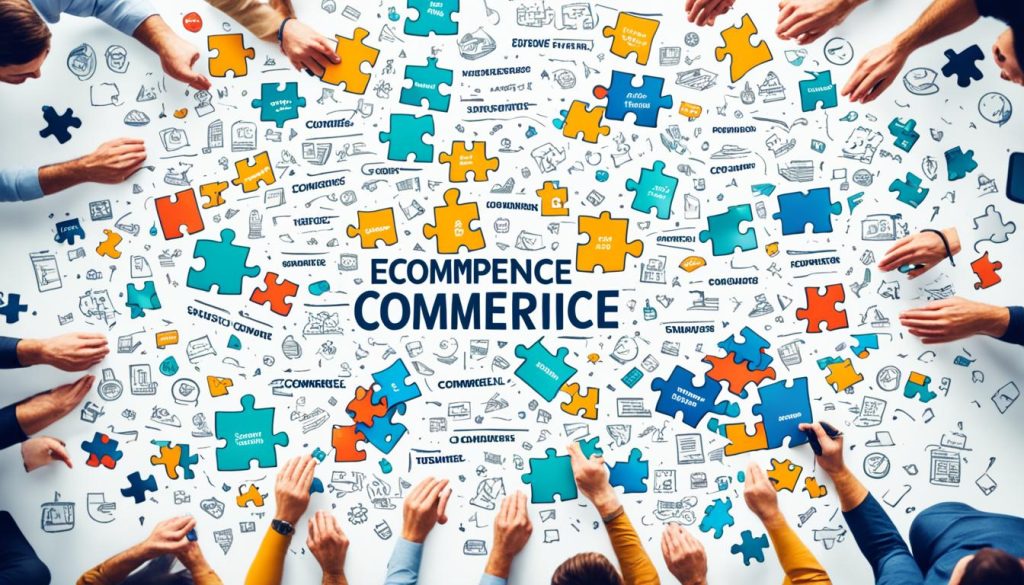
| Business Model | Description | Examples |
|---|---|---|
| B2C | Business sells directly to individual consumers | Amazon, Best Buy, Walmart |
| B2B | Business sells to other businesses in bulk | Alibaba, ThomasNet |
| C2C | Individual consumers sell to other consumers | eBay, Etsy, Kijiji |
| C2B | Consumers sell products or services to businesses | Upwork, Fiverr, Amazon Mechanical Turk |
| B2B2C | Business partners with another business to sell to consumers | Nike and Foot Locker |
| B2G | Business sells to government entities or administrations | SAM.gov, GovSpend |
| D2C | Business sells directly to consumers, bypassing retailers | Warby Parker, Casper, Glossier |
Value Delivery Methods for Ecommerce Innovation
E-commerce businesses have a range of value delivery methods at their disposal to foster innovation and provide enhanced value to their customers. By utilizing these methods, online retailers can differentiate themselves from competitors and meet the evolving needs of their target audience.
White Label: One value delivery method is white labeling, which involves branding and selling a product that is manufactured by a third-party distributor. This allows e-commerce businesses to offer high-quality products under their own brand name without the need for extensive production and manufacturing processes.
Private Label: Another method is private labeling, where businesses sell products under their own brand name, but the products are produced by a third party. Private labeling enables e-commerce retailers to focus on marketing, customer service, and other aspects of their business while leveraging the expertise and resources of manufacturers.
Wholesaling: Wholesaling is a value delivery method that involves selling products in bulk at a discounted price to other businesses. This method is commonly used by e-commerce retailers who have established relationships with suppliers and can offer competitive pricing to other retailers or distributors.
Dropshipping: Dropshipping has gained popularity in recent years as a fast-growing value delivery method. With dropshipping, a seller markets and sells products that are fulfilled and shipped directly by a third-party supplier. This allows retailers to offer a wide range of products without the need for inventory management or order fulfillment logistics.
Subscription: Subscription services have become increasingly popular among e-commerce businesses. By offering subscription models, retailers can deliver products or services to customers on a recurring basis, providing convenience and savings. This method also fosters customer loyalty and retention, as subscribers benefit from ongoing access to exclusive products or services.
By utilizing value delivery methods like white labeling, private labeling, wholesaling, dropshipping, and subscription services, e-commerce businesses can actively innovate and enhance the value they deliver to their customers. These methods offer flexibility, convenience, and the ability to differentiate from competitors, driving customer satisfaction and business growth.
Selecting Your Ecommerce Business Model
When it comes to starting an ecommerce business, selecting the right business model is crucial for success. To make an informed decision, you should consider various factors, such as product selection, customer analysis, and capabilities evaluation.
- Product Selection: Before diving into any business model, it’s essential to determine what products or services you want to sell. Conduct thorough market research to identify the demand for your chosen products. Analyze competitors, understand market trends, and consider your niche. By selecting the right products, you can meet customer needs and stay ahead of the competition.
- Customer Analysis: Understanding your target customers is vital for tailoring your business model. Analyze their expectations, behaviors, and preferences. Identify their pain points and determine how your products can solve their problems. By aligning your business model with customer needs, you can effectively market and sell your products.
- Capabilities Evaluation: Assess your own capabilities and strengths to determine which business model suits you best. Consider factors such as your expertise, resources, and available technology. Evaluate whether you have the necessary infrastructure, team, and financial capacity to support the chosen model. By leveraging your strengths, you can effectively execute your business model.
Additionally, consider the value delivery methods that align with your business. Whether it’s through white labeling, private labeling, wholesaling, dropshipping, or subscription services, choose the method that best supports your product selection and customer analysis.
The image below highlights the key steps in selecting your ecommerce business model:
| Step | Description |
|---|---|
| 1 | Product Selection |
| 2 | Customer Analysis |
| 3 | Capabilities Evaluation |
The Future of eCommerce
The future of eCommerce is filled with tremendous opportunities for growth and innovation. Experts predict that online sales will continue to soar, with the eCommerce sector expected to capture a significant portion of total purchases in the United States. As technology advances, we can expect to see exciting developments in online shopping trends and emerging technologies that will shape the future of eCommerce.
One of the key drivers of eCommerce growth is the rise of mobile commerce. With smartphones becoming an integral part of our lives, consumers are increasingly turning to their mobile devices to shop. Mobile commerce offers convenience, accessibility, and personalized experiences, allowing people to browse and make purchases at their fingertips. As businesses adapt to this trend, optimizing their websites for mobile devices and offering seamless mobile shopping experiences will be crucial to success.
Another exciting trend in eCommerce is the integration of augmented reality (AR) and artificial intelligence (AI). AR technology enables customers to visualize products and try them virtually, enhancing the online shopping experience. AI-powered chatbots and virtual assistants provide personalized recommendations, answer customer queries, and streamline the purchasing process. These innovations not only improve customer engagement but also enhance efficiency and customer satisfaction.
To stay ahead in the ever-evolving eCommerce landscape, businesses must keep a close eye on emerging technologies and market trends. Investing in infrastructure that supports mobile commerce, exploring the potential of AR and AI, and harnessing data analytics to gain insights into customer behavior are just a few ways to ensure future success. By embracing these advancements, businesses can engage customers on a deeper level, deliver exceptional experiences, and drive eCommerce growth in Canada and beyond.
FAQ
What are the different types of eCommerce websites?
What is a vendor-specific website?
What is a multi-vendor website?
What is a marketplace website?
What are the different types of eCommerce business models?
What is the B2C business model?
What is the B2B business model?
What is the C2C business model?
What is the C2B business model?
What is the B2B2C business model?
What is the B2G business model?
What is the D2C business model?
What are some value delivery methods for eCommerce innovation?
What is white labeling?
What is private labeling?
What is wholesaling?
What is dropshipping?
What are subscription services?
How should I select my eCommerce business model?
What is the future of eCommerce?
- Shop for Server & Workstation Systems & more - February 25, 2025
- IP Geolocation API and IP Location Lookup Tools - February 24, 2025
- What is GoDaddy? Everything You Need to Know in 2024 - February 23, 2025
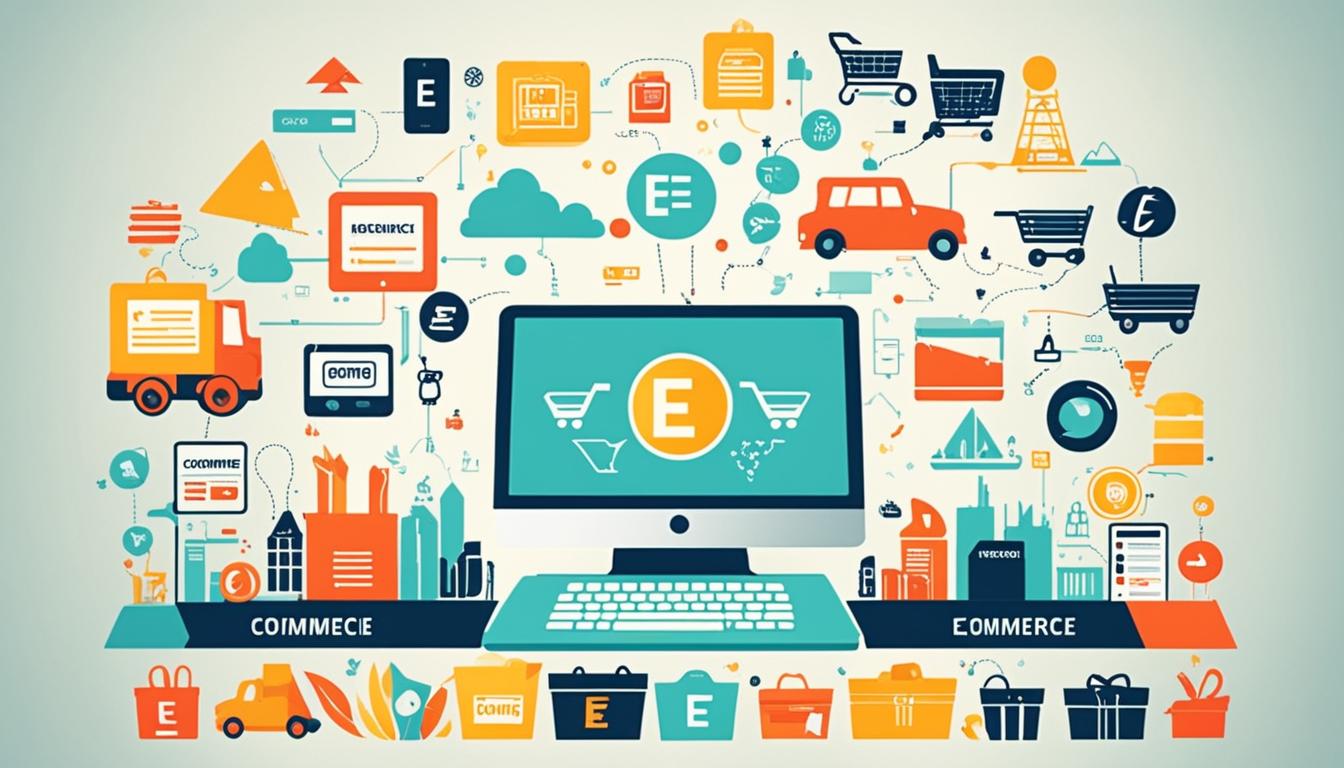
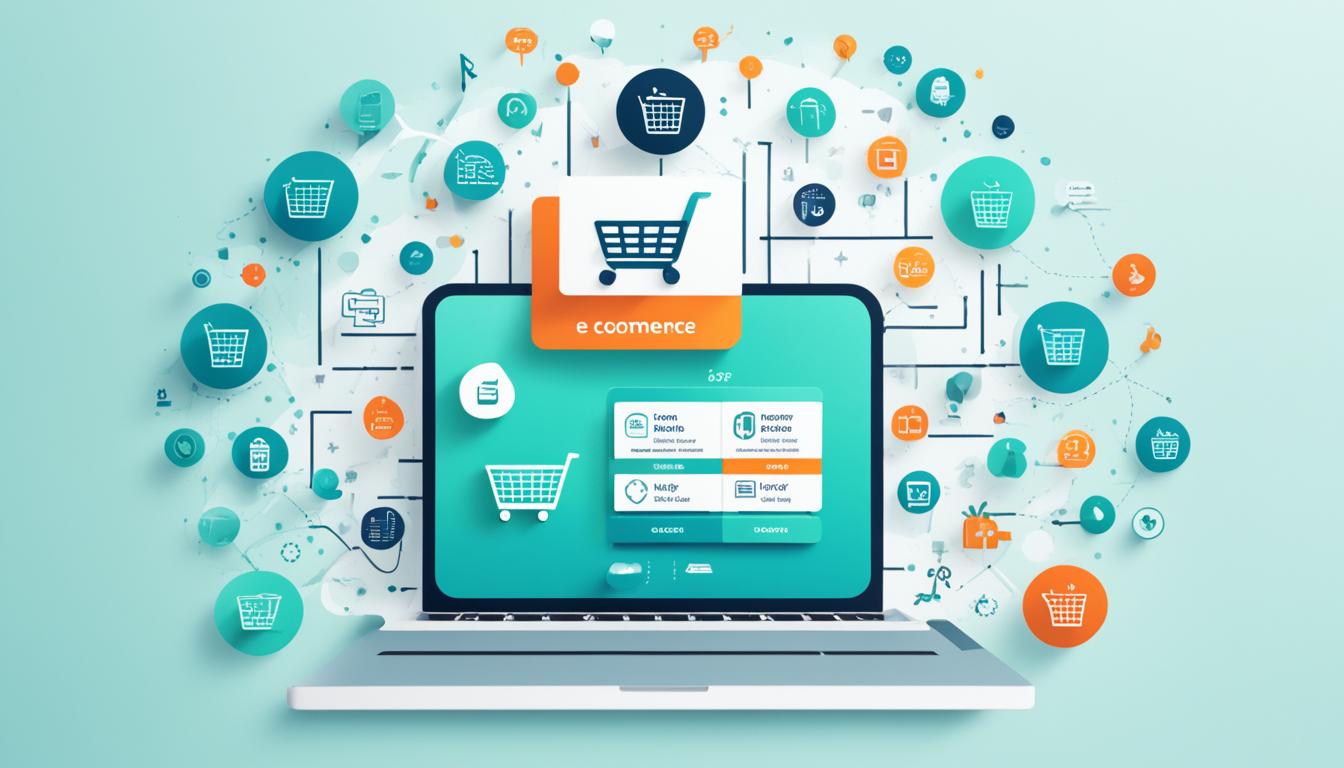

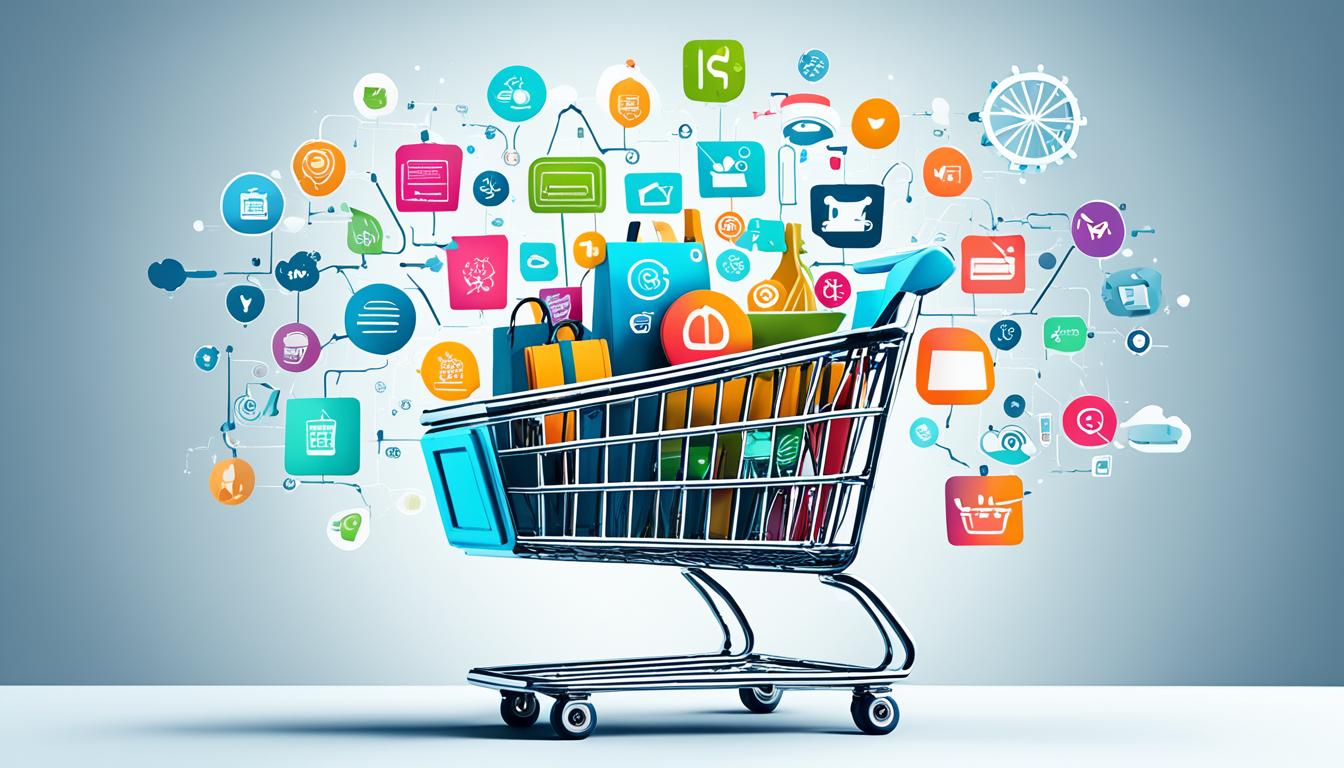



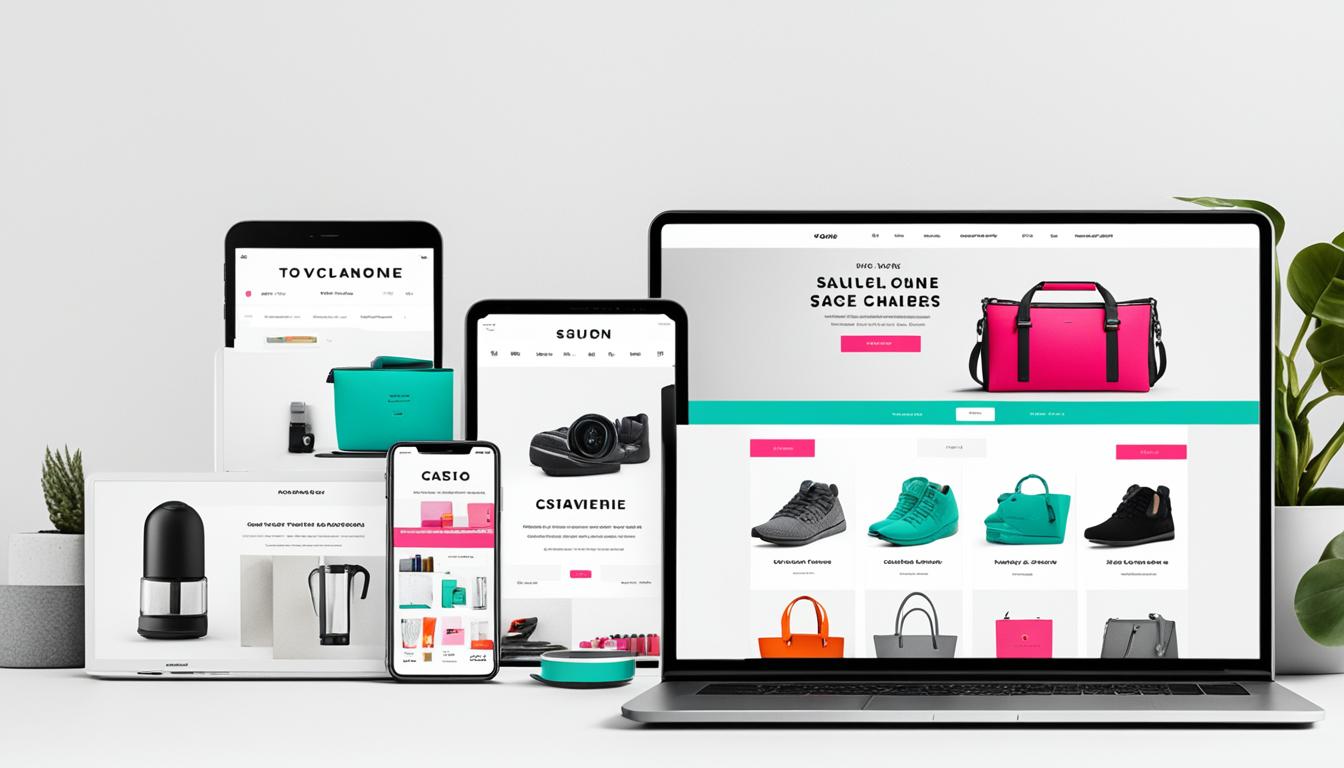













Post Comment
You must be logged in to post a comment.